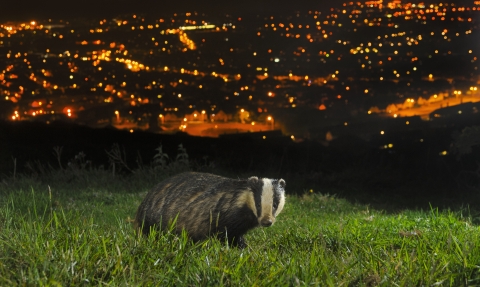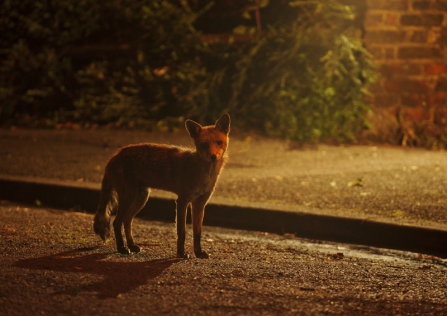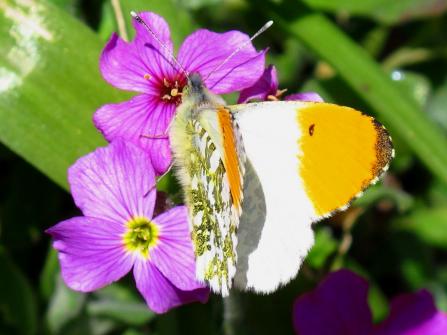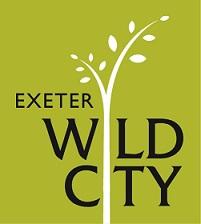
Photo, Terry Whittaker/2020VISION
In the city
More and more wildlife is found in the city
Under pressure from a changing countryside, much of our wildlife has now found a welcoming home in our towns and cities

Photo, Terry Whittaker/2020VISION
From foxes to peregrine falcons – it’s amazing what you can discover
-
Wildlife has adapted to our city habits turning office blocks into nest sites and rubbish bins into food sources
- Gardens, parks and allotments provide greens spaces with a variety of wild and cultivated plants that is wider than that found in much of the countryside

Orange-tip. Photo, Nigel Richards
Brownfields and green fields
Brownfield sites are the name given to former industrial spaces. When people abandon these places wildlife quickly moves in. They make excellent growing conditions for plants such docks, teasels and dandelions.
The absence of people from brownfield sites leaves them as tranquil havens and great places for common lizards and slow worms to bask in. Dragonflies, butterflies and rare bees also forage among abandoned buildings and wasteland.
Plymouth, Exeter, Barnstaple and Torbay contain excellent green infrastructure – networks of parks, allotments, churchyards, railway sidings and water ways. In recent years their common urban mammals such as foxes and hedgehogs have been joined by new urban migrants including badgers and roe deer.
Many people do not think of cities as wildlife rich areas, but our parks, gardens and other green spaces provide excellent habitats for a range of species.Exeter Wild City
What does your garden grow?
Gardens are vital resources for wildlife. By doing simple things – putting out food, digging a pond, making nest boxes and letting areas go wild – it’s possible to attract a dazzling array of birds, insects and other animals to your patch.
Your garden can be a window on to local wildlife. A garden is the place to experience red admirals and bumblebees foraging in a flower border; goldfinches and great tits visiting bird feeders; and common frogs and grass snakes exploring the surface of a pond.
At night the list of garden creatures will change. Tawny owls hunt, while bats search out the many moths that feed on the nectar of garden plants including jasmine and nicotiana.
Devon Wildlife Trust’s own Cricklepit Mill, in the heart of Exeter, is a great place to start to appreciate the potential and diversity of an urban wildlife garden. More than 140 different plants grow there, while kingfishers, dippers, grey wagtails and otters frequently use its stream.

Working for urban wildlife
We’ve been working with Exeter City Council to nurture urban wildlife and wild places since 2008.
Discover more about the wildflower meadows, community orchards and other work of Exeter Wild City.
Find out more about a species you've seen
Become a member and support our work
The vital work we do for nature depends on the support of people who care about the future of Devon’s wildlife and wild places.
